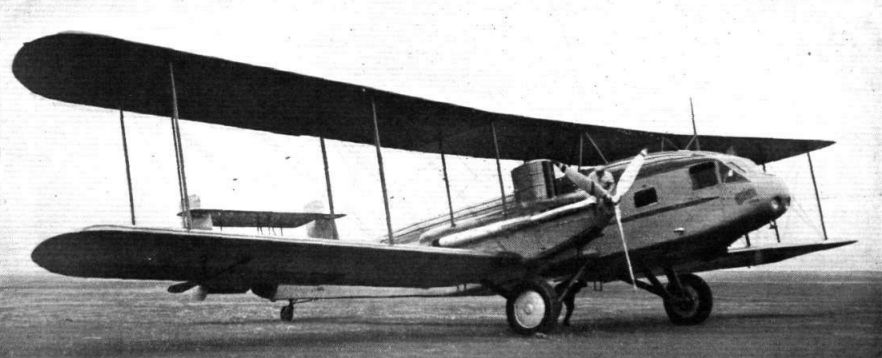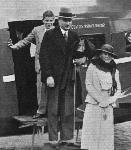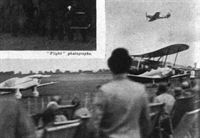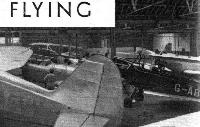
Варианты
- Martin - MB-1/MB-2 - 1918 - США
- Curtiss - B-2 Condor - 1927 - США
- Curtiss - Condor 18 - 1929 - США
Condor 18
Condor 18 (позже Model 53): гражданский вариант, отличался переделанной и удлиненной носовой частью фюзеляжа, где в закрытой кабине размещались летчик и второй пилот, бипланная коробка аналогична В-2, в салоне помещалось до 18 пассажиров. После постройки трех Condor 18 была заказана вторая партия из трех машин с рядом конструктивных изменений, включавших поперечное V не только на нижнем, но и на верхнем крыле, увеличенную площадь хвостового оперения и более короткий фюзеляж. Первый Condor 18 поднялся в воздух в июне 1929 года, однако рынок гражданских самолетов в то время был захвачен трехмоторными монопланами Ford и Fokker, обладавшими более высокими летными данными, крейсерская скорость Condor 18 составляла всего 200 км/ч. Несколько Condor 18 продали в 1931 году компании "Eastern Airlines" за сумму, лишь немного превышавшую их себестоимость. Эта компания эксплуатировала самолеты в течение нескольких лет. В конце 1930-х годов на четыре самолета установили дополнительные пассажирские сиденья, после чего их использовали для перевозок гастролирующих по США театральных трупп
Описание:
- Condor 18
- Curtiss-Wright CW-4 (BT-32 Condor II)
- Flight, April 1934
The Curtiss-Wright "Condor” BT-32 Bomber
Фотографии
-
Мировая Авиация 99
Регистрационный номер: NR12384 Один Condor построили с дополнительными топливными баками как дальний вариант для участия в антарктической экспедиции Берда 1933 года. Самолет отличался неубирающимся шасси, на которое могли крепиться поплавки или лыжи.
-
Flight 1932-07 / Flight
THE CURTISS "CONDOR": A commercial version of the American "Condor" night bomber. It has two 600 h.p. Curtiss "Conqueror" engines and is fitted with a Sperry "Automatic Pilot." Accommodation is provided for 18 passengers and a crew of 3. Its speed range is 57-139 m.p.h.
-
Aeroplane Monthly 1989-05 / Personal album. Civil
Регистрационный номер: NC727K Curtiss Condor NC727K belonging to Atlantic flyer Clarence Chamberlin and possibly the aircraft he used to barnstorm the Mid West. This 91ft 8in span 18-passenger variant of the US Army Condor bomber was powered by two 12-cylinder 600 h.p. Curtiss Conqueror engines. The Condor had an all-up weight of nearly 18,000lb and was certificated in 1929.
-
Flight 1932-02 / Flight
OVER THE GRAND CANYON: A flight of Curtiss "Condor" Bombers of the U.S. Army Air Corps shown on their way over the Grand Canyon, North Arizona, to the relief of Navajo Indians who were isolated by heavy snowfalls recently.
-
Flight 1933-10 / Flight
FOR THE BYRD ANTARCTIC EXPEDITION: The Curtiss-Wright "Condor," in which Admiral Richard E. Byrd will fly over the South Pole, flying over New York City. It is powered by two 700 h.p. Wright "Cyclone" engines, has a top speed of 170 miles an hour and a landing speed of 45 miles per hour.
-
Jane's All the World Aircraft 1980 / Encyclopedia of Aviation - Aircraft A-Z - v3
Curtiss CT-32 Condor used on the Byrd Antarctic Expedition.
-
Air Enthusiast 2003-11 / G.Salerno - Over the Poles
Red overall Curtiss R4C-1 9584 at West Base, Marie Byrd Land, 1940.
-
Flight 1933-10 / Flight
BYRD'S ANTARCTIC EXPEDITION: Rear Admiral Richard Evelyn Byrd tells his plans for the Second Expedition into the Antarctic wastes to an audience that gathered at the Boston Airport on September 29 for the christening of one of the Curtiss "Condors" he is taking with him. This plane, the William Horlick, has been named after one of the sponsors of the Expedition.
-
Flight 1938-04 / Flight
STRANGE CARGO: Two flamingoes, part of the odd zoological consignment unloaded from International Air Freight’s Curtiss Condors at Croydon last week.
-
Flight 1934-05 / Flight
MONSIEUR LE PRESIDENT: M. Pilet-Golaz, the President of Switzerland, arriving with his family at Geneva in the Curtiss "Condor" of the Swissair Co.
-
Flight 1935-07 / Flight
Loading up an American Airlines Curtiss "Condor'' sleeper-'plane at Los Angeles preparatory to starting a transcontinental flight. The berths are larger and more comfortable than those on railways
-
Flight 1937-10 / Flight
Регистрационный номер: G-AEZE [3] FREIGHT ONLY: One of International Air Freight's Curtiss Condors on the tarmac at Croydon. These machines have been specially modified to take really large pieces of freight and to simplify the loading process.
-
Авиация и Космонавтика 2018-03 / В.Морозов - Принцессы пятого океана
Стюардесса швейцарской авиакомпании «Swissair» на фоне самолета DH-89 «Дрэгон Рапид» (Curtiss AT-32C Condor II ???). Фото сделано в берлинском аэропорту Темпельгоф в 1934 г.
-
Flight 1934-04 / Flight
FROM PLOUGH-SHARE TO SWORD: The Curtiss-Wright "Condor" Bomber, developed from the commercial transport "Condor."
-
Flight 1938-07 / Flight
Variety: Sqn. Ldr. Gillan’s Hurricane flies over an International Air Freight Condor; on the left is Capt. Percival’s Mew Gull, and in front of the Condor is a Magister.
Другие самолёты на фотографии: Hawker Hurricane - Великобритания - 1935Miles Magister / M.14 - Великобритания - 1937Percival Mew Gull - Великобритания - 1934
-
Aviation Historian 19 / R.Mulder - Pole position
Регистрационный номер: G-AEZE [3] Looking considerably more modern than its contemporary, Valkyrien shares parking space with UK airline International Air Freight’s Curtiss Condor G-AEZE at Amsterdam, where the S-43 was overhauled by Dutch airline KLM before being delivered to French shipping company Compagnie des Chargeurs Reunis in 1937.
Другие самолёты на фотографии: Sikorsky S-43 Baby Clipper/JRS/Y1OA-8 - США - 1936
-
Air Enthusiast 1996-11 / K.Wixey - Incidental Combatant (1)
Регистрационный номер: G-AEZE [3] Ramp scene at Amsterdam-Schiphol June 25, 1938, dominated by Fw 200 V2 D-AETA ‘ Westfalen ’ of DLH. Alongside it is Fokker-assembled Douglas DC-3 PH-ARZ ‘Ijsvogel' of KLM. To the left is Curtiss T-32 Condor G-AEZE of International Air Freight and to its right KLM Lockheed Super Electra PH-APE ‘Ekster’.
Другие самолёты на фотографии: Douglas DC-3 / C-47 Skytrain/С-53 Skytrooper / Dakota - США - 1935Focke-Wulf FW.200 Condor - Германия - 1937Lockheed Super Electra 14 - США - 1937
-
Flight 1937-10 / Flight
THE ILL WIND: A corner of Rollason's hangar at Croydon. In the foreground is a Stinson Reliant, with the little Latvian V.E.F. J.12 behind it and the South African Junkers Junior on the right. One of I.A.F.'s Curtiss Condor freighters can be seen in the far distance.
Другие самолёты на фотографии: Irbitis, VEF I-11 / I-12 / I-17 - Латвия - 1936Junkers A 50 Junior - Германия - 1929Stinson Reliant - США - 1933
-
Flight 1936-04 / Flight
The Curtiss Condor (two Cyclones) is a particularly quiet transport. This view shows some of the insulating measures - indicated by arrows - which have been taken in its Sperry-proofed cabin.
-
Flight 1934-01 / Flight
AN AERIAL SLEEPER: The sleeping accommodation provided by Eastern Air Transport on one of their Curtiss "Condor" airliners.
-
Flight 1934-05 / Flight
DAY AND NIGHT: Two interior views of the Curtiss-Wright "Condor" airliner, showing the convertible sleeping berth arrangement, which forms a feature of the new fleet of machines to be put into operation by American Airways between Dallas and Los Angeles.
-
Flight 1935-06 / Flight
These large, comfortable berths make it easy to sleep while flying at night in a Curtiss "Condor" on American Airlines.
-
Мировая Авиация 99
Curtiss T-32 Condor II
- Фотографии






















